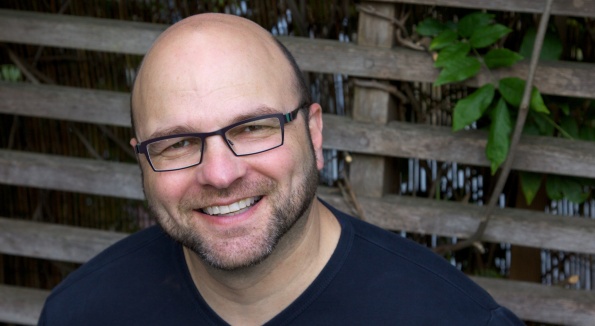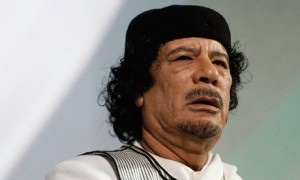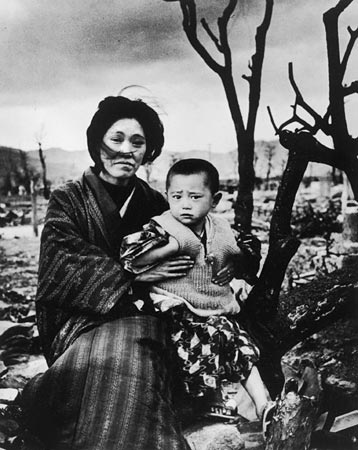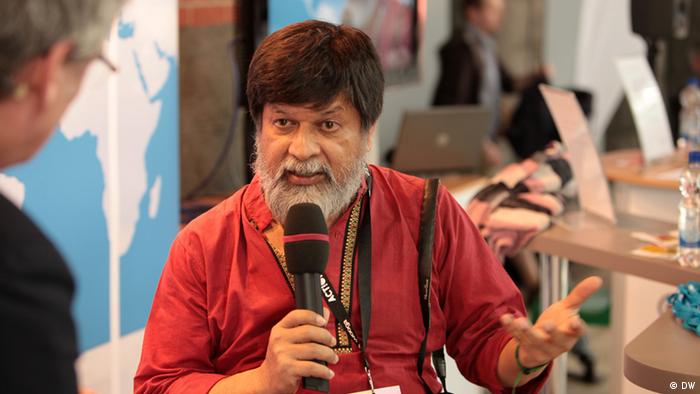Tag: Military
Highly lethal and highly under-regulated
The Economist
Quick study: The global arms trade

ANDREW FEINSTEIN is our inaugural host for “Quick study”, a new series on Prospero that offers a crash course in a particular subject, delivered by an expert in the field, with some suggestions for further reading. Mr Feinstein is the author of the new book “The Shadow World: Inside the Global Arms Trade”, out this week in Britain and America. A former South African MP, he resigned in 2001 in protest against the government’s refusal to allow an investigation into a corrupt ?5 billion arms deal. His 2007 political memoir, “After the Party: A Personal and Political Journey Inside the ANC” (reviewed by The Economist here), became a bestseller in South Africa. Mr Feinstein lives in London and he co-directs Corruption Watch, an anti-corruption organisation. Here he answers a few questions about the global arms trade. Continue reading “Highly lethal and highly under-regulated”
Getting in the way
Razia Haque was incensed. She was not a trendy environmentalist. Her sentences weren?t interspersed with English and she didn?t know any of the developmental jargon. She was a grandmother who lived in Elephant Road who walked through the park everyday to drop off her granddaughter at the university. But she knew this was wrong. ?Nature is for everyone. What do they think they are doing? How many years has it taken for these trees to grow? They?ve destroyed the beauty of this place. They?ve dulled our senses. It can only cause bitterness. About common people, about the government about everyone. They do as they please. How can you allow this? You should all give slogans. Who has authorised the cutting of these trees? Once the trees have gone there?s nothing you can do. Just because they?re in power they?ll cut down the trees, how can that be??
Continue reading “Getting in the way”
A Secret Plot in Syria
An illustrated account of the 1949 coup?possibly CIA-assisted?that plunged the country into decades of political turmoil.
By?Andy Warner|Posted Wednesday, April 4, 2012, at 7:45 AM ET
Part III Military-installed caretaker govt, or a 'consortium' govt?
by rahnuma ahmed
The incongruencies were many. They helped to sow suspicion among members of the public. The general relief felt in the early period of the caretaker government’s takeover, gradually slipped away.
Having failed to gain legitimacy, the consortium government finally relinquished power on January 6, 2009, after the December 2008 electoral results declared Awami League the winner, that too, with a landslide victory.
I was reminded of Pakistan’s president Parvez Musharraf because the US government (which headed the ‘western bloc,’ the third constitutive element of the consortium government) had learnt a lesson from Musharraf’s regime. The latter had suffered from a legitimacy crisis (some say, Musharraf had used it at times to stave off some of the demands made by the Bush administration); the lesson which the American administration had learnt was that a government voted to power, albeit, under conditions favorable to imperial policies and interests, is not similarly encumbered. Continue reading “Part III Military-installed caretaker govt, or a 'consortium' govt?”
Part II Military-installed caretaker govt, or a 'consortium' govt?
by Rahnuma ahmed
Speaking on the basis of information available in the public domain, I think it would be fair to say that the intellectual understanding, the political framework, effectivity and inspiration of the shusheel shomaj was largely dependent on western diplomats and donors — characterising it thus, helps us to analyse subsequent events. However, by saying this, I do not mean to imply that the shusheel shomaj, one of the constitutive elements of the consortium government was a homogeneous group; what I do mean is that no fracture lines within the shomaj were markedly visible, nor do subsequent events indicate that this group had a set of allies and enemies distinct to that of western diplomats and donors.
This, however, is not equally applicable in the case of the military leadership (and the Directorate of General Forces Intelligence, DGFI, military intelligence agency). What strikes one most when examining the manner in which the consortium project manifested itself in the national arena, is that the civil-military power equation which was reached at, and maintained in Bangladesh during the last two decades of parliamentary politics (http://tinyurl.com/7ynnn6f), was the concerted attempt made by the military leadership and DGFI’s seniors, post-consortium coup, to tilt the equation in favor of the military. Continue reading “Part II Military-installed caretaker govt, or a 'consortium' govt?”
Dead men tell no tales
Subscribe to ShahidulNews
By Vijay Prashad
21 October 2011 ??The Greanville Post ? Qaddafi, From Beginning to End
NATO?s Agenda for?Libya
 On the dusty reaches out of Sirte, a convoy flees a battlefield. A NATO aircraft fires and strikes the cars. The wounded struggle to escape. Armed trucks, with armed fighters, rush to the scene. They find the injured, and among them is the most significant prize: a bloodied Muammar Qaddafi stumbles, is captured, and then is thrown amongst the fighters. One can imagine their exhilaration. A cell-phone traces the events of the next few minutes. A badly injured Qaddafi is pushed around, thrown on a car, and then the video gets blurry. The next images are of a dead Qaddafi. He has a bullet hole on the side of his head.
On the dusty reaches out of Sirte, a convoy flees a battlefield. A NATO aircraft fires and strikes the cars. The wounded struggle to escape. Armed trucks, with armed fighters, rush to the scene. They find the injured, and among them is the most significant prize: a bloodied Muammar Qaddafi stumbles, is captured, and then is thrown amongst the fighters. One can imagine their exhilaration. A cell-phone traces the events of the next few minutes. A badly injured Qaddafi is pushed around, thrown on a car, and then the video gets blurry. The next images are of a dead Qaddafi. He has a bullet hole on the side of his head.
These images go onto youtube almost instantly. They are on television, and in the newspapers. It will be impossible not to see them.
The Third Geneva Convention (article 13): ?Prisoners of war must at all times be protected, particularly against acts of violence or intimidation and against insults and public curiosity.?
The Fourth Geneva Convention (article 27): ?Protected persons are entitled, in all circumstances, to respect for their persons, their honor, their family rights, their religious convictions and practices, and their manners and customs. They shall at all times be humanely treated, and shall be protected especially against all acts of violence or threats thereof and against insults and public curiosity.?
One of the important ideological elements during the early days of the war in Libya was the framing of the arrest warrant for Qaddafi and his clique by the International Criminal Court?s selectively zealous chief prosecutor Luis Moreno Ocampo. It was enough to have press reports of excessive violence for Moreno Ocampo and Ban Ki-Moon to use the language of genocide; no independent, forensic evaluation of the evidence was necessary. [Actually, independent evaluation was soon forthcoming from Amnesty International and Human Rights Watch, decisively debunking Ocampo?s charges. AC/JSC.]
NATO sanctimoniously said that it would help the ICC prosecute the warrant (this despite the fact that the United States, NATO?s powerhouse, is not a member of the ICC). This remark was echoed by the National Transitional Council, NATO?s? political instrument in Benghazi.
Humanitarian intervention was justified on the basis of potential or alleged violations of the Geneva Conventions. The intervention?s finale is? a violation of those very Conventions.
It would? have been inconvenient to see Qaddafi in open court. He had long abandoned his revolutionary heritage (1969-1988), and had given himself over to the U. S.-led War on Terror at least since 2003 (but in fact since the late 1990s). Qaddafi?s prisons had been an important torture center in the archipelago of black sites utilized by the CIA, European intelligence and the Egyptian security state. What stories Qaddafi might have told if he were allowed to speak in open court? What stories Saddam Hussein might have told had he too been allowed to speak in an open court? As it happens, Hussein at least entered a courtroom, even as it was more kangaroo than judicial.
No such courtroom for Qaddafi. As Naeem Mohaiemen put it, ?Dead men tell no tales. They cannot stand trial. They cannot name the people who helped them stay in power. All secrets die with them.
Qaddafi is dead. As the euphoria dies down, it might be important to recall that we are dealing with at least two Qaddafis. The first Qaddafi overthrew a lazy and corrupt monarchy in 1969, and proceeded to transform Libya along a fairly straightforward national development path. There were idiosyncrasies, such as Qaddafi?s ideas about democracy that never really produced institutions of any value. Qaddafi had the unique ability to centralize power in the name of de-centralization. Nevertheless, in the national liberation Qaddafi certainly turned over large sections of the national surplus to improve the well-being of the Libyan people. It is because of two decades of such policies that the Libyan people entered the 21st century with high human development indicators. Oil helped, but there are oil nations (such as Nigeria) where the people languish in terms of their access to social goods and to social development.
By 1988, the first Qaddafi morphed into the second Qaddafi, who set aside his anti-imperialism for collaboration with imperialism, and who dismissed the national development path for neo-liberal privatization (I tell this story in Arab Spring, Libyan Winter, which will be published by AK Press in the Spring of 2012). This second Qaddafi squandered the pursuit of well-being, and so took away the one aspect of his governance that the people supported. From the 1990s onward, Qaddafi?s regime offered the masses the illusion of social wealth and the illusion of democracy. They wanted more, and that is the reason for the long process of unrest that begins in the early 1990s (alongside the Algerian Civil War), comes to a head in 1995-96 and then again in 2006. It has been a long slog for the various rebellious elements to find themselves.
The new leadership of Tripoli was incubated inside the Qaddafi regime. His son, Saif al-Islam was the chief neoliberal reformer, and he surrounded himself with people who wanted to turn Libya into a larger Dubai. They went to work around 2006, but were disillusioned by the rate of progress, and many (including Mahmud Jibril, the current Prime Minister) had threatened to resign on several occasions. When an insurengy began in Benghazi, this clique hastened to join them, and by March had taken hold of the leadership of the rebellion. It remains in their hands.
What is being celebrated on the streets of Benghazi, Tripoli and the other cities? Certainly there is jubilation at the removal from power of the Qaddafi of 1988-2011. It is in the interests of NATO and Jibril?s clique to ensure that in this auto-da-f? the national liberation anti-imperialist of 1969-1988 is liquidated, and that the neoliberal era is forgotten, to be reborn anew as if not tried before. That is going to be the trick: to navigate between the joy of large sections of the population who want to have a say in their society (which Qaddafi blocked, and Jibril would like to canalize) and a small section that wants to pursue the neoliberal agenda (which Qaddafi tried to facilitate but could not do so over the objections of his ?men of the tent?). The new Libya will be born in the gap between the two interpretations.
The manner of Qaddafi?s death is a synecdoche for the entire war. NATO?s bombs stopped the convoy, and without them Qaddafi would probably have fled to his next redoubt. The rebellion might have succeeded without NATO. But with NATO, certain political options had to be foreclosed; NATO?s member states are in line now to claim their reward. However, they are too polite in a liberal European way to actually state their claim publically in a quid-pro-quo fashion. Hence, they say things like: this is a Libyan war, and that Libya must decide what it must do. This is properly the space into which those sections in the new Libyan power structure that still value sovereignty must assert themselves. The window for that assertion is going to close soon, as the deals get inked that lock Libya?s resources and autonomy into the agenda of the NATO states.
VIJAY PRASHAD?is the George and Martha Kellner Chair of South Asian History and Director of International Studies at Trinity College, Hartford, CT His most recent book,?The Darker Nations: A People?s History of the Third World,?won the Muzaffar Ahmad Book Prize for 2009. The Swedish and French editions are just out. He can be reached at:?vijay.prashad@trincoll.edu
9/11, growing disbelief at US government's account a decade later…
Subscribe to ShahidulNews
By rahnuma ahmed
Today, September 11, 2011, is the tenth anniversary of the attacks on New York city’s Twin Towers, and the Pentagon.

Eleven days after the attack, president Bush, in his address to a joint session of the Congress had said, the attacks were carried out by al Qaeda, a “collection of loosely affiliated terrorist organizations” because they hate our freedoms. Freedom of religion, speech, vote, and assembling and disagreeing with each other. Briefly put, a hatred for the American way of life. They kill not only to end lives “but to disrupt and end a way of life.” “They stand against us because we stand in their way” (September 20, 2001).
But?and I hope this will give grounds for thought to readers and friends, who still cling to the idea that Osama bin Laden was responsible for the attacks, for the deaths of three thousand innocent civilians?the Bush administration had decided by 11am, September 11, 2001 that al-Qaeda was responsible for the attacks. Prior to conducting an indepth police investigation.
That same evening, at 9:30pm, a War Cabinet, with a select number of top intelligence and military advisors, was formed. That very night, at 11:00pm, a mere 12 hours after Bush administrators had declared al Qaeda to be responsible, the `War on Terror’ was officially launched (Michel Chossudovsky, The Truth Behind 9/11, Global Research, September 11, 2008).
Less than 4 weeks later, Afghanistan was bombed and invaded. The occupation, as we know, continues. And US troops, as recent press reports indicate, may stay in Afghanistan until 2024. Continue reading “9/11, growing disbelief at US government's account a decade later…”
The Great Hiroshima Cover-up
Subscribe to ShahidulNews
By Greg Mitchell
The Nation
In the weeks following the atomic attacks on Japan sixty-six years ago this week, and then for decades afterward, the United States?engaged in airtight suppression of all film shot in Hiroshima and Nagasaki after the bombings. This included vivid color footage shot by U.S. military crews and black-and-white Japanese newsreel film.

The public did not see any of the newsreel footage for twenty-five years, and the shocking US military film?remained hidden for nearly four decades. While the suppression of nuclear truths stretched over decades, Hiroshima sank into ?a kind of hole in human history,? as the writer Mary McCarthy observed. The United States engaged in a costly and dangerous arms race.?Thousands of nuclear warheads remain in the world, often under loose control; the United States retains its ?first-strike? nuclear policy; and much of the world is partly or largely dependent on nuclear power plants, which pose their own hazards.
Our nuclear entrapment continues to this day?you might call it ?From Hiroshima to Fukushima.?
The color US military footage would remain hidden until the early 1980s, and has never been fully aired. It rests today at the National Archives in College Park, Maryland, in the form of 90,000 feet of raw footage labeled #342 USAF. When that footage finally emerged, I spoke with and corresponded with the man at the center of this drama: Lt. Col. (Ret.) Daniel A. McGovern, who directed the US military film-makers in 1946, managed the Japanese footage, and then kept watch on all of the top-secret material for decades. I also interviewed one of his key assistants, Herbert Sussan, and some of the Japanese survivors they filmed.
Continue reading “The Great Hiroshima Cover-up”
THE ?KILL TEAM? PHOTOGRAPHS
Subscribe to ShahidulNews
![]()
Posted by?Seymour M. Hersh
The New Yorker
 La Mohammed Kalay, Afghanistan, 2010.
La Mohammed Kalay, Afghanistan, 2010. Abu Ghraib, Iraq, 2003.
Abu Ghraib, Iraq, 2003. Soldiers rest just after the My Lai massacre, 1968.
Soldiers rest just after the My Lai massacre, 1968. My Lai 4, Vietnam, 1968.
My Lai 4, Vietnam, 1968.
It?s the smile. In photographs?released by the German weekly?Der Spiegel, an American soldier is looking directly at the camera with a wide grin. His hand is on the body of an Afghan whom he and his fellow soldiers appear to have just killed, allegedly for sport. In a sense, we?ve seen that smile before: on the faces of the American men and women who piled naked Iraqi prisoners on top of each other, eight years ago, and posed for photographs and videos?at the Abu Ghraib prison outside of Baghdad.
It?s also the cameras.?Der Spiegel reported this week that it had obtained four thousand photographs and videos taken by American soldiers who referred to themselves as a ?kill team.? (Der Spiegel chose to publish only three of the photographs.) The images are in the hands of military prosecutors. Five soldiers, including Jeremy Morlock, the smiling man in the picture, who is twenty-two years old, are awaiting courts-martial for the murder of three Afghan civilians; seven other soldiers had lesser, related charges filed against them, including drug use. On Tuesday, Morlock?s lawyer said that he would plead guilty.
Why photograph atrocities? And why pass them around to buddies back home or fellow soldiers in other units? How could the soldiers? sense of what is unacceptable be so lost? No outsider can have a complete answer to such a question. As someone who has been writing about war crimes since My Lai, though, I have come to have a personal belief: these soldiers had come to accept the killing of civilians?recklessly, as payback, or just at random?as a facet of modern unconventional warfare. In other words, killing itself, whether in a firefight with the Taliban or in sport with innocent bystanders in a strange land with a strange language and strange customs, has become ordinary. In long, unsuccessful wars, in which the enemy?the people trying to kill you?do not wear uniforms and are seldom seen, soldiers can lose their bearings, moral and otherwise. The consequences of that lost bearing can be hideous. This is part of the toll wars take on the young people we send to fight them for us. The G.I.s in Afghanistan were responsible for their actions, of course. But it must be said that, in some cases, surely, as in Vietnam, the soldiers can also be victims.
The?Der Spiegel photographs also help to explain why the American war in Afghanistan can probably never be ?won,? in my view, just as we did not win in Vietnam. Terrible things happen in war, and terrible things are happening every day in Afghanistan, as Americans continue to conduct nightly assassination raids and have escalated the number of bombing sorties. There are also reports of suspected Taliban sympathizers we turn over to Afghan police and soldiers being tortured or worse. This will be a long haul; revenge in Afghan society does not have to come immediately. We could end up not knowing who hit us, or why, a decade or two from now.


